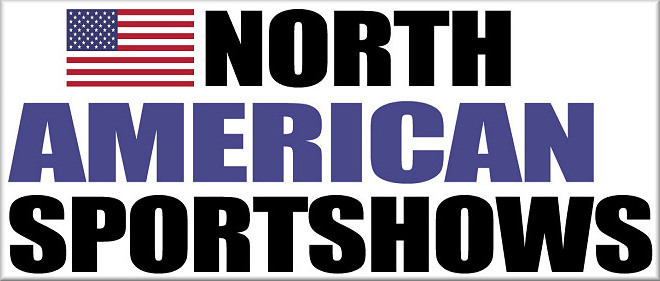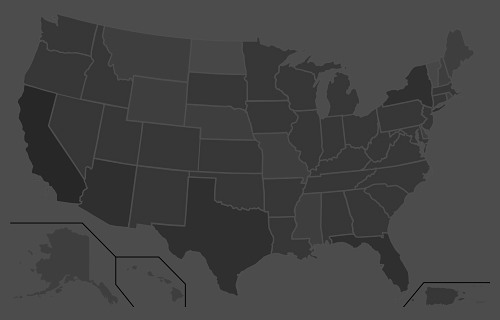“Our added winter moisture and active calling period led to a very long nesting and hatching season, starting in late April and extending into early summer, with chicks hatching as late as early July,” O’Dell said. “From a population standpoint, we are out of a deficit for the first time since 2001-2002. Quail are starting to pop up in places they haven’t been seen in a while.
“If you’ve never had the chance to experience what Arizona quail hunting built its name on, then this would be the year to get out and enjoy it.”
Meanwhile, hunters should note that the season for Mearns’ quail doesn’t begin until Dec. 4. It’s summer rainfall that plays a key role in nesting success and population numbers of this species. After a spotty and relatively weak monsoon across southern Arizona, these birds are likely to be abundant only in pockets that received sufficient precipitation this summer.
A valid Arizona hunting or combination hunt and fish license is required for all hunters 10 and older. Those hunters under 10 must either have a valid hunting or combination hunt and fish license, or be accompanied by an adult who possesses a valid hunting or combination hunt and fish license. Licenses can be purchased online or at license dealers statewide. A youth combination hunt and fish license (ages 10 to 17) is $5.
The general bag limit is 15 quail per day in the aggregate, of which no more than eight may be Mearns’ quail (when the Mearns’ season opens Dec. 4). The general possession limit is 45 quail in the aggregate after opening day, of which no more than 15 Gambel’s, scaled or California quail in the aggregate may be taken in any one day. After the opening of the Mearns’ season, the 45-quail possession limit may include 24 Mearns’ quail, of which no more than eight may be taken in any one day.
More quail-hunting information can be found on the department’s website at https://www.azgfd.com/Hunting/. Another resource for both new and experienced hunters alike is “An Introduction to Hunting Arizona’s Small Game.” Written by Randall D. Babb, the 196-page, full-color book covers where and how to hunt small game birds (like quail), squirrels, rabbits, ducks and geese. It also includes how to prepare and cook your harvest, with illustrations and recipes. The book can be ordered for $16.95 at www.azgfd.gov/publications.
Finally, hunters should check out O’Dell’s techniques for field-dressing quail at https://www.youtube.com/watch?v=3gRwZAcWzzk.
####
Publishers Notes: OUT OF STATE HUNTERS, FISHERMEN & OUTDOOR ENTHUSIASTS; Due to the Covid 19 pandemic, there could be limitations for OUT of STATE hunters, fishermen and other outdoor enthusiasts to include a 14-day quarantine requirement or negative COVID-19 testing alternative. Please check with the State's Department of Natural Resources BEFORE you travel or apply for the 2020 Fall Hunts.
Disclaimer: The views expressed on this site are that of the authors and not necessarily that of TBC Press
LDWF Announces 2022 Derelict Crab Trap Cleanup Events
Volunteers and Sponsors Needed
Submitted by: TBC Press
Posted on: 11/08/21
The Backcountry Press
The country's premier daily HUNTING, FISHING & OUTDOOR news in the USA and around the globe. Read whats happening in your neck of the woods & beyond.
© 2020 TBC Press - All Rights Reserved Website Design by:
News # 14612
The Louisiana Department of Wildlife and Fisheries (LDWF) will host its annual Derelict Crab Trap Rodeo volunteer cleanup events this February. LDWF encourages volunteers and sponsors to participate in these events to make the crab trap rodeos successful in 2022 and keep our Sportsman’s Paradise pristine.
Volunteers
Volunteers will help collect traps in the field, unload traps at the dock, and count traps as they are unloaded. Commercial fishermen are highly encouraged to participate, as their experience with the local waters and ability to stack traps on their vessels is valuable. Event organizers will provide boat owners with the equipment needed to collect the traps; however, boat owners are responsible for transporting traps in their vessels.
Removing abandoned crab traps is a wet and dirty job, so volunteers should wear appropriate clothing and water-resistant gear. Volunteers should bring their own personal floatation device, which should be worn at all times while on the water.
- Barataria Basin: A dedicated volunteer day will be held on Saturday, February 12, 2022, from 8:00 a.m. to 3:00 p.m. at Jean Lafitte Harbor located at 4932 Kenal Road Lafitte, LA 70067. You may contact Peyton Cagle at 337-491-2575, or [email protected] for directions. To better coordinate volunteer activities, volunteers are encouraged to register in advance at the following website: http://lsu.qualtrics.com/jfe/form/SV_emKwDve0uxrlFgG
- Calcasieu Basin: A dedicated volunteer day will be held on Saturday, February 19, 2022, from 8:00 a.m. to 3:00 p.m. at the Sabine National Wildlife Refuge West Cove Public Launch (north side). The launch is across the street from Sabine National Wildlife Refuge Admin Building and Visitor Contact Station at 3000 Holly Beach Highway Hackberry, LA 70645. You may contact Peyton Cagle at 337-491-2575, or [email protected] for directions. To better coordinate volunteer activities, volunteers are encouraged to register in advance at the following website: http://lsu.qualtrics.com/jfe/form/SV_emKwDve0uxrlFgG
Sponsors
In previous years, sponsors have provided lunch and/or drinks for all the event participants, breakfast, random gifts for door prizes, portable bathroom facilities, and dumpsters. If you are interested in sponsoring the rodeo event, please contact Peyton Cagle before December 31, 2021 at [email protected]. Please use the words “2022 DCTR Event” in the subject of the email and state how you, your business, or organization would like to sponsor this event.
Area Closures
A list of all the closure areas can be found at https://www.wlf.louisiana.gov/page/derelict-crab-trap-removal, along with additional information about the program.
Before the closures occur, LDWF will mail notices to licensed commercial crab fishermen and seafood dealers informing them that crab traps, by law, must be removed from within the closure areas during the closure period, and all remaining crab traps will be considered abandoned and may be removed by agency personnel or volunteers with no reimbursement to the owner of the abandoned crab traps.
These proposed trap removal regulations do not provide authorization for access to private property. Individual landowners can only provide authorization to access private property.
Crab traps may be removed only between one half-hour before sunrise to one half-hour after sunset. Only LDWF, or those designated by LDWF, will be authorized to remove derelict crab traps in the closure areas. Abandoned traps must be brought to LDWF designated disposal sites and may not be taken from the closed area.
LDWF initiated the Derelict Crab Trap Removal Program in 2004 to address the removal of derelict and abandoned crab traps. Derelict traps increase ghost-fishing mortality of blue crabs and other species captured incidentally, interfere with other commercial fishing gear fishing operations, create navigation hazards, and degrade the beauty of our natural environment. A portion of the fees paid by fishermen to participate in the commercial fishing industry funds the volunteer-based program. Since its inception, the program has disposed of more than 50,000 derelict crab traps, with 5,163 being removed in 2021.
For more information on the Derelict Crab Trap Removal Program, go to http://www.wlf.louisiana.gov/fishing/derelict-crab-trap-removal, or contact Peyton Cagle at 337-491-2575 or [email protected].
####












